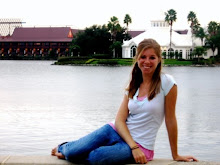Seabury Stoneburner
Nina Perez
WST 3015
12 April 2010
The Real Secrets of NIMH
As educated adults, we may sometimes view cartoons in another aspect then when we were young, innocent children. Some animated films are made with a hidden message to adults, such as The Secret of NIMH. It seems as if the film wanted to make more individuals aware of the environment in which they live in.
The movie is about a widowed mouse, Mrs. Brisby; that is trying to help her son recover from ammonia before “moving day”, which is occurring because “plowing” season is near. She comes across a crow, Jeremy, who directs her to The Great Owl to obtain help for her son. The Great Owl’s advice is for her to seek for the rats of NIMH (National Institute of Mental Health) in the rose bushes and ask for Nicodemus, the wise leader. When Mrs. Brisby arrives at the rose bush, the audience discovers that these rats are extremely intelligent due to past experiments and test that were performed on them when they were captives of NIMH. Their hidden world, which lies underground, is filled with beautiful lights that make one forget the evilness of the electricity, which they are stealing. Unfortunately, the rats became dependable on human electricity in order to survive. If one analyzes the rats of NIMH, they might notice that all of them appear to be male. Therefore this demonstrates the idea that males tend to be disconnected and harmful to nature “based on their analysis of the connections between masculinist social institutions and the destruction of the physical environment” (Kirk 539). Their use of electricity is somewhat destroying the natural world, in which they once lived in, and also demonstrating the need for dangerous human materialism.
Mrs. Brisby represents the feminine connection with nature; she still lives her life through the natural processes and does not rely on human electricity. Through actions and motivations Mrs. Brisby had during the movie demonstrates how women care about the environment they and their precious family members live in. She is worried about her families’ safety with the future journey of moving to avoid the plow. The plow may be gendered as masculine and is seen as a threat to the earth, which is gendered as feminine. One may view this as violence against women, the threatening plow harming Mother Nature. This may demonstrates that the nature within the movie is passive verses active. Many creatures among the farm do not plan to fight against it; instead they run from it and let it do its annual damage. However, Mrs. Brisby does become active in one part of the film when she risks her life to disconnect the fuel line of the plow. This was a minor act that represented nature fighting against destructive human machinery, but overall the nature in the film is passive.
Most of the rats of NIMH come to realize that their dependency on electricity is not much of a fulfillment that they thought they wanted. It seems the effect of NIMH finally became an issue to them. Most of the rats come to the conclusion that a natural lifestyle may be healthier for them than an unnatural one filled of toxins “A commonly held belief is that natural substances are less toxic to the human body than synthetic ones” (Steingraber 554). The rats decide to help Mrs. Brisby and her family move safely to Thorn Valley to escape the plow and the toxic atmosphere of their humanized under world development.
Overall, The Secret of NIMH is a movie that helps demonstrate the view of nature from an ecofeminist’s point of view. The film shows how animal testing can cause a negative effect on the environment. Hopefully the depressing scene of animals in cages struck the children’s hearts. The movie did a great job creating NIMH to be a place of terror and cruelty. These rats became more intelligent; however, in most cases, many become infected with some sort of disorder or death. Since the film was created for an audience mainly composed of children, instead of death being the result, unhappiness with their life is shown. The film’s representation of destruction and harm caused by humans and their materials on the natural environment may be difficult to interpret, but with education and knowledge one may notice the awareness.
Work Cited:
Kirk, Gwyn and Okazawa-Rey, Margo. "Violence Against Women." Women's Lives Multicultural Perspectives. 5th Ed. New York: McGraw-Hill, 2010. 535-549.
Steingraber, Sandra. “Rose Moon”. "Violence Against Women."Women's Lives Multicultural Perspectives.5th Ed. New York: McGraw-Hill, 2010. 549-557.

